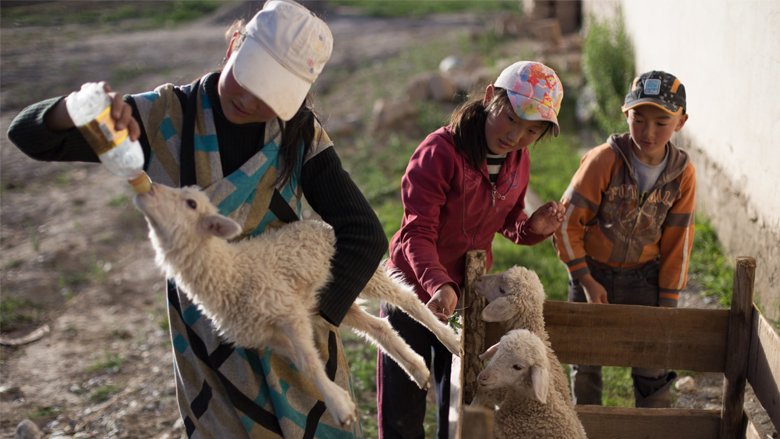For the 50 percent of the Kyrgyz Republic’s population that lives in rural areas, agriculture is vital for reducing poverty, improving income inequality, increasing food security, and generating employment. Drought, however, poses a risk to that economic growth. The 2010 drought severely affected the agriculture sector. As the droughts of 2011, 2012, and 2014 compounded the situation, the agriculture sector’s contribution to economic growth declined.
Livestock production can act as a social safety net against hardships and financial distress for rural household, providing regular income and food security. But in the Kyrgyz Republic, livestock production was suffering. Years of unsustainable use of pastures had degraded them and reduced their value for animal grazing. Lack of investment in infrastructure and mismanagement of natural resources meant that remote mountain pastures were not being sufficiently utilized. And poor animal husbandry practices, sub-par feed quality, and animal health issues were exacerbating the issue.
Building on the country’s legal reforms in 2009, an IDA-supported project worked to strengthen community-based governance and management of pasturelands to improve the livelihoods of the rural population. It also set out to increase the productivity of the livestock sector by expanding access to essential animal health services.
Between 2014 and 2019, nearly 198,000 people, including almost 100,000 women, benefited from training that improved livestock management practices across 140 rural communities. In addition, nearly 750 veterinarians were trained, representing more than a 100 precent increase in the number of community-based veterinary practices, significantly improving the overall animal health situation in the country.
By increasing access to common pastures for the poorest livestock herders and promoting better management of common natural resources, the project has also helped alleviate poverty, enhanced the capacity of state pasture institutions, and helped strengthen the voices of vulnerable groups. Now, with IDA’s support, activities like monitoring of pasture conditions and just-in-time alerts on weather changes are helping pasture communities to mitigate the risks associated with climate change.


